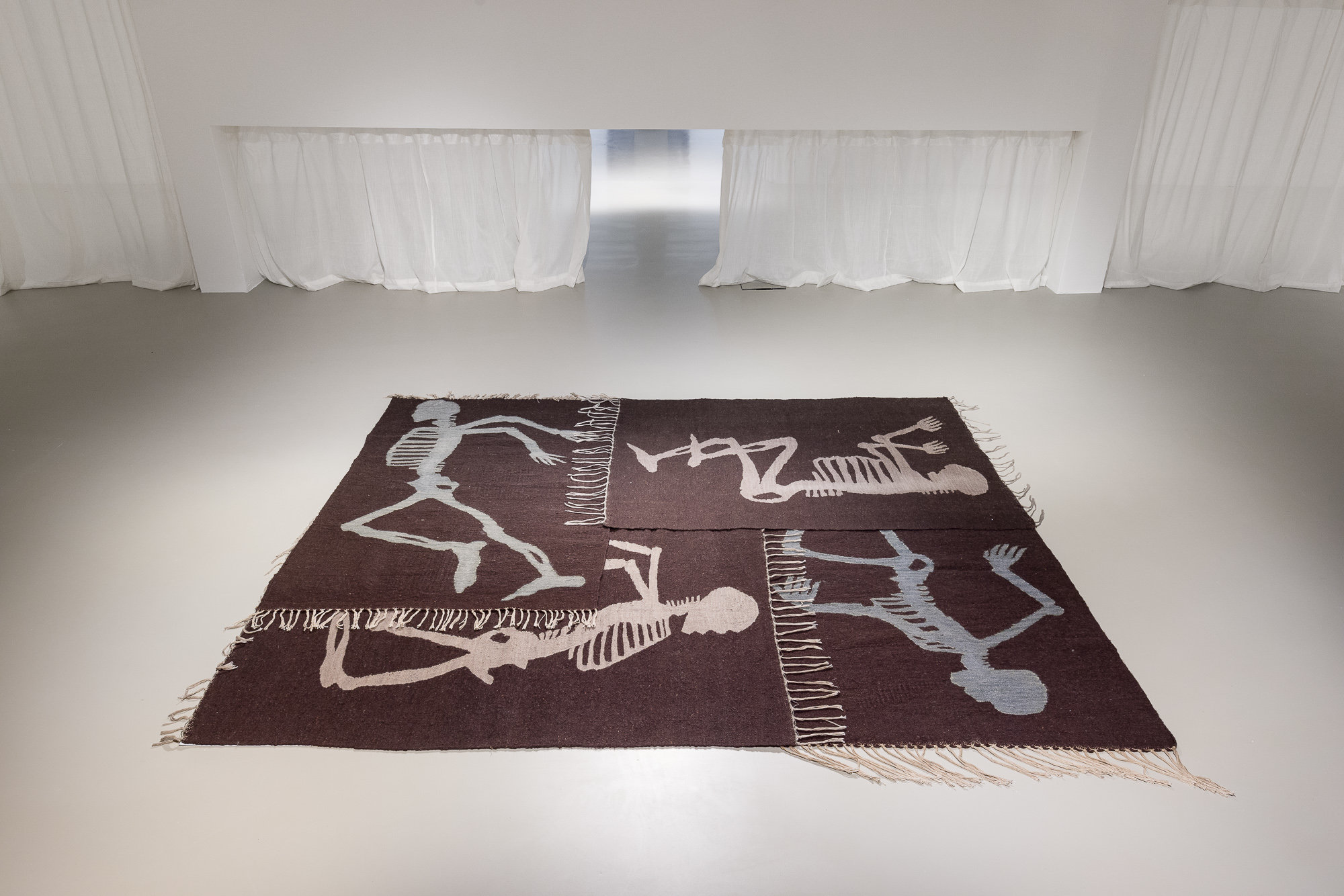Mona Hatoum

4 Rugs (made in Egypt), 1998/2015
Four hand-woven wool rugs
264 x 228 cm
Courtesy of the artist
The human body is at the center of the work of Mona Hatoum (*1952 Beirut, lives in London), which focuses on exploring the relationship between politics and the individual. In the late 1980s Hatoum began to make installations and sculptures from a broad range of materials. She often used grids and geometrical shapes in order to point out social control systems. Among her works is a series of household objects that were either enlarged or adapted, making them both familiar and uncanny at the same time. In her work 4 Rugs (made in Egypt) (1998÷2015) Hatoum refers to the Luxor attack in Deir el-Bahari, (1997), an archaeologically renowned burial site near the river Nile in Egypt. Islamists killed 62 foreign tourists. Her presentation of overlapping and interweaving woven items mirrors this event, which is often called a massacre, as well as the skeletons in their earth graves. The form refers to the ground plans of ancient Egyptian laborers’ dwellings near the Luxor temple complex. In the object shown here, Mona Hatoum achieves a combination of a traditional craft with historical ruptures.
Mona Hatoum
Through her poetic and radical oeuvre, the Palestinian-British artist explores themes of home and displacement, gender and differences, and exposes the contradictions and conflicts of our world today. Recent solo exhibitions include the Tate Modern, London; Kiasma Museum of Contemporary Art, Helsinki; and Mathaf: Arab Museum of Modern Art, Doha.
She was part of the documenta 14, Kassel; other selected group exhibitions took place at Martin-Gropius-Bau, Berlin; MoMA, New York; Israel Museum, Jerusalem; Wexner Center for the Arts, Columbus, a.o.